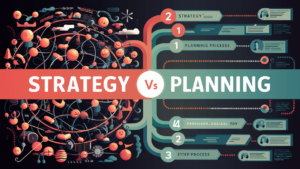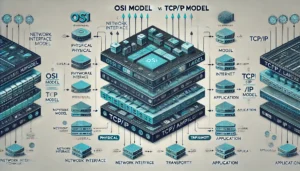In the world of DevOps and modern software development, Docker has emerged as a powerful tool for containerization, allowing developers to package applications and their dependencies into containers that can run consistently across various environments. To harness the full potential of Docker, it’s essential to understand its core concepts. Here are eight must-know Docker concepts that every developer should familiarize themselves with for efficient containerization.
1. Dockerfile 📝
A Dockerfile is a script that contains a series of instructions on how to build a Docker image. It defines the environment in which your application will run, including the operating system, application code, and dependencies.
Key Instructions:
- FROM: Specifies the base image.
- WORKDIR: Sets the working directory inside the container.
- CMD: Defines the command to run when the container starts.
Importance:
- Automation: Automates the process of setting up the environment.
- Reproducibility: Ensures consistent environments across different stages of development.
2. Docker Image 📦
A Docker image is a read-only template that contains the application code, dependencies, and runtime environment. It is built from a Dockerfile and used to create Docker containers.
Components:
- Code: The application code.
- Dependencies: Libraries and modules required by the application.
- Base Image: The underlying operating system or runtime environment.
Benefits:
- Portability: Can be shared and run anywhere.
- Efficiency: Uses layers to optimize storage and build times.
Example: A Docker image might include a Node.js application with all its dependencies and configuration files, making it ready to run on any system with Docker installed.
3. Docker Container 🚢
A Docker container is a runnable instance of a Docker image. It encapsulates the application and its dependencies, providing an isolated environment that runs consistently across different platforms.
Lifecycle:
- Create: Initialize the container from an image.
- Start: Run the container.
- Stop: Halt the container’s execution.
- Remove: Delete the container.
Usage:
- Isolation: Ensures the application runs in a consistent environment.
- Scalability: Easily scalable across multiple environments.
Example: Running a Docker container from a Node.js image will start the application within an isolated environment, ensuring that it behaves the same regardless of where it’s run.
4. Docker Registry 📚
A Docker registry is a repository where Docker images are stored and distributed. Public registries like Docker Hub provide a vast collection of pre-built images, while private registries offer secure storage for proprietary images.
Functions:
- Storage: Hosts Docker images.
- Distribution: Allows users to pull and push images.
- Versioning: Manages different versions of images.
Example:
- Docker Hub: The default public registry.
- Private Registry: Custom registries for enterprise use.
5. Docker Compose 🐙
Docker Compose is a tool for defining and running multi-container Docker applications. It uses a YAML file to configure the application’s services, networks, and volumes.
Configuration:
- docker-compose.yml: Defines the services and their configurations.
- Commands: docker-compose up, docker-compose down.
Advantages:
- Simplification: Manages complex applications with multiple containers.
- Automation: Automates the deployment process.
6. Docker Networks 🌐
Docker networks enable communication between Docker containers. They provide isolation and security by defining how containers interact with each other and external services.
Types of Networks:
- Bridge Network: Default network allowing communication between containers.
- Host Network: Shares the host’s network stack.
- Overlay Network: Used in swarm mode for multi-host networking.
Benefits:
- Isolation: Ensures secure communication.
- Flexibility: Supports various networking models.
7. Docker Volumes 📂
Docker volumes are used to persist data generated and used by Docker containers. They provide a way to store data outside the container’s file system, ensuring data remains intact even if the container is removed.
Usage:
- Create Volume: docker volume create my-volume
- Mount Volume: docker run -d -v my-volume:/app/data my-image
Benefits:
- Persistence: Data is preserved across container restarts.
- Sharing: Allows data sharing between multiple containers.
8. Docker CLI 💻
The Docker Command Line Interface (CLI) is a powerful tool for interacting with Docker. It provides commands for managing images, containers, networks, and more.
Common Commands:
- docker build: Build an image from a Dockerfile.
- docker pull: Pull an image from a registry.
- docker run: Run a container from an image.
- docker ps: List running containers.
Tips:
- Automation: Scripts can automate common tasks.
- Monitoring: Commands help monitor and troubleshoot containers.
By mastering these eight essential Docker concepts, you’ll be well-equipped to leverage Docker’s full potential for efficient containerization. Whether you’re building simple applications or complex multi-container systems, understanding Docker’s core components will enhance your development workflow, improve scalability, and ensure consistency across different environments.
Happy Dockering! 🐳

























